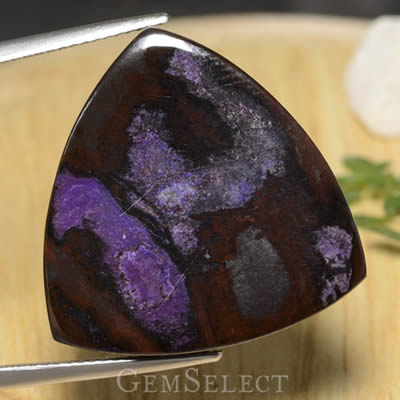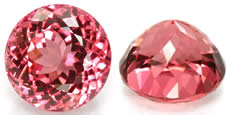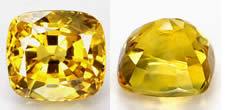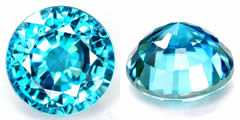I tuoi dettagli
I tuoi dettagli
|
Recensito da Andreas Zabczyk
Gemstone Shape and Cut: Is There a Difference?In the gemstone world we are taught that shape and cut are different concepts., but the difference isn't always obvious. Is a trillion a cut or a shape?  Trillion Shape - Plain Cut
The term cushion cut clearly suggests it refers to a cut, but the word 'cushion' is actually shape term, which means shaped like a cushion or pillow. The same goes for 'pear'; it seems obvious that it's a shape, so why do we say 'pear-cut' when we refer to a gemstone in the shape of a pear? It all sounds rather confusing -- maybe trying to distinguish between gemstone shapes and gemstone cut isn't such a good idea after all.  Round Shape - Portuguese Cut
Even though our everyday language often blends the terms, there is a significant distinction between gem shapes and gem cuts. Understanding this difference is crucial for appreciating the nuances of gem cutting. The shape of a gemstone refers to its overall outline or form, such as round, oval, or pear, while the gem cut pertains to the specific method used to facet the stone and enhance its brilliance. By clarifying these two concepts, we can better grasp the art and technique involved in gem cutting and appreciate the unique characteristics each gem shape and cut brings to a piece.  Cushion Shape - Facet Cut
Consider round gemstones, for example. Looking at our inventory of round shaped gems, we can find a great number of different types of round stones; some are cut as cabochons, with no facets at all. Some are cut with a traditional faceting technique, or with a so-called 'brilliant' diamond-cut. Others are cut with very different fancy faceting techniques, such as the concave cut, rose-cut or a buff-top cut. Yet others have what is called a Portuguese cut or even a checkerboard-cut. So we have one shape - round - and multiple types of cutting styles. Though we sometimes use the phrase 'round-cut', it's quite obvious from our example that this phrase doesn't make a lot of sense when it comes to an accurate description. We need to say round Portuguese cut or round cabochon, and so on for example.  Oval and Pear Shape - Cabochon Cuts
The meaning of the concept of shape should now be fairly obvious. A shape is the face-up outline form of the stone, whether it be round, oval, square, rectangular, pear, marquise or trillion. Given a stone of a certain shape, a gem cutter or lapidary can decide to cut that gem with different styles of facets, or no facets at all. At the simplest level, we can distinguish the plain cut from the faceted cut. A plain cut has no facets, and may be executed as a level tablet (as in agate) or with a domed top like a cabochon. A faceted cut has a number of separate small planes. There are also mixed cuts which combine the two; for example, a gem with a faceted pavilion and a plain crown.  Round Shape - Brilliant Cut
There are many different facet styles and they can be distinguished according to the shape of the facets. There are three basic types; brilliant cuts, with mainly rhomboid and triangular facets in a radial pattern; step cuts with trapezoid or rectangular facets in concentric rows; and mixed cuts, which combine both brilliant and step-cut type facets. A detailed description of the various facet cuts can get quite complicated and very technical, even for those in the gem and jewelry trade. For example, there are at least six well-known variations on the 56-facet brilliant cut, with different proportions for the facets. Then there are also variations of the brilliant-cut, some with additional facets, while others have fewer facets as well. |
